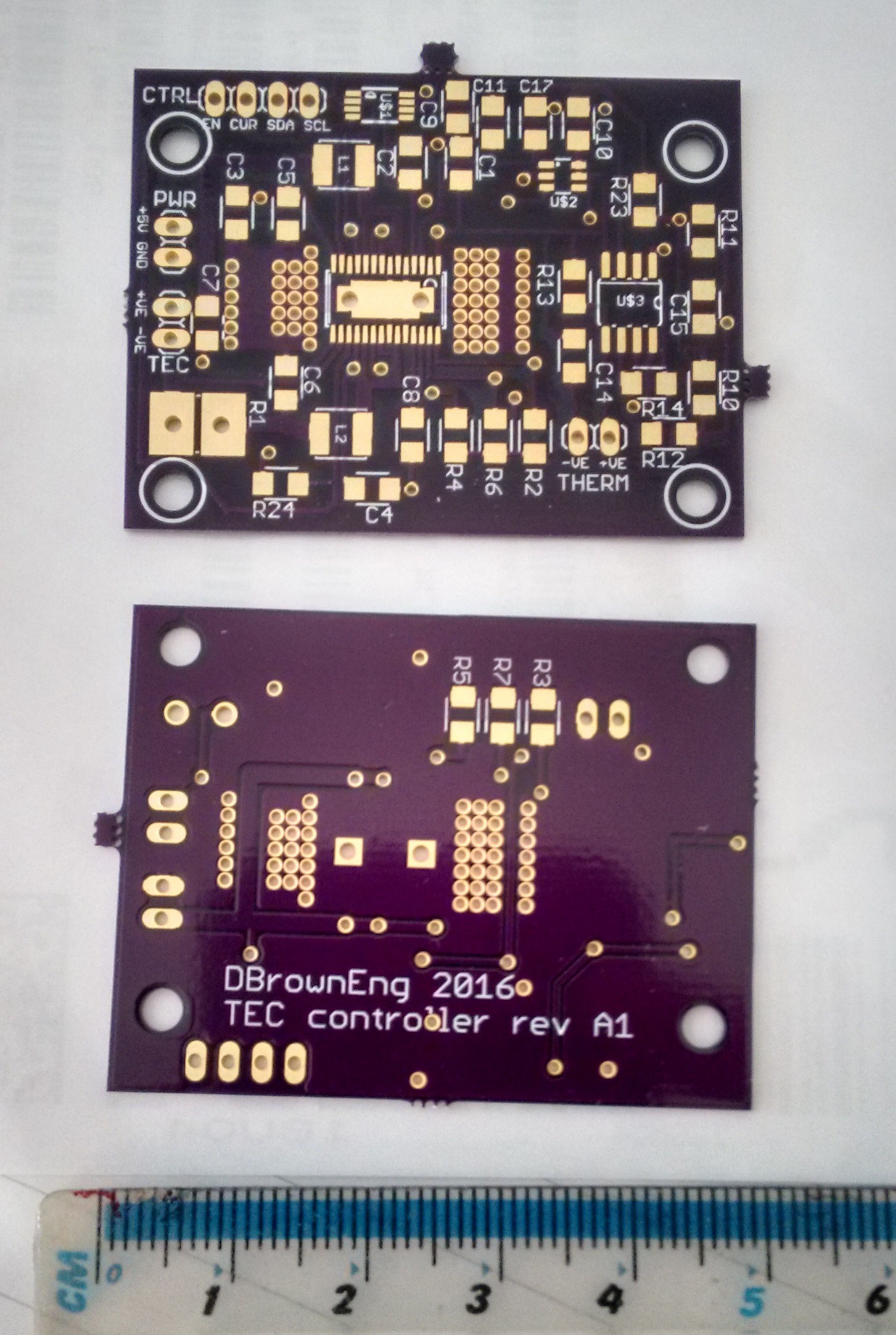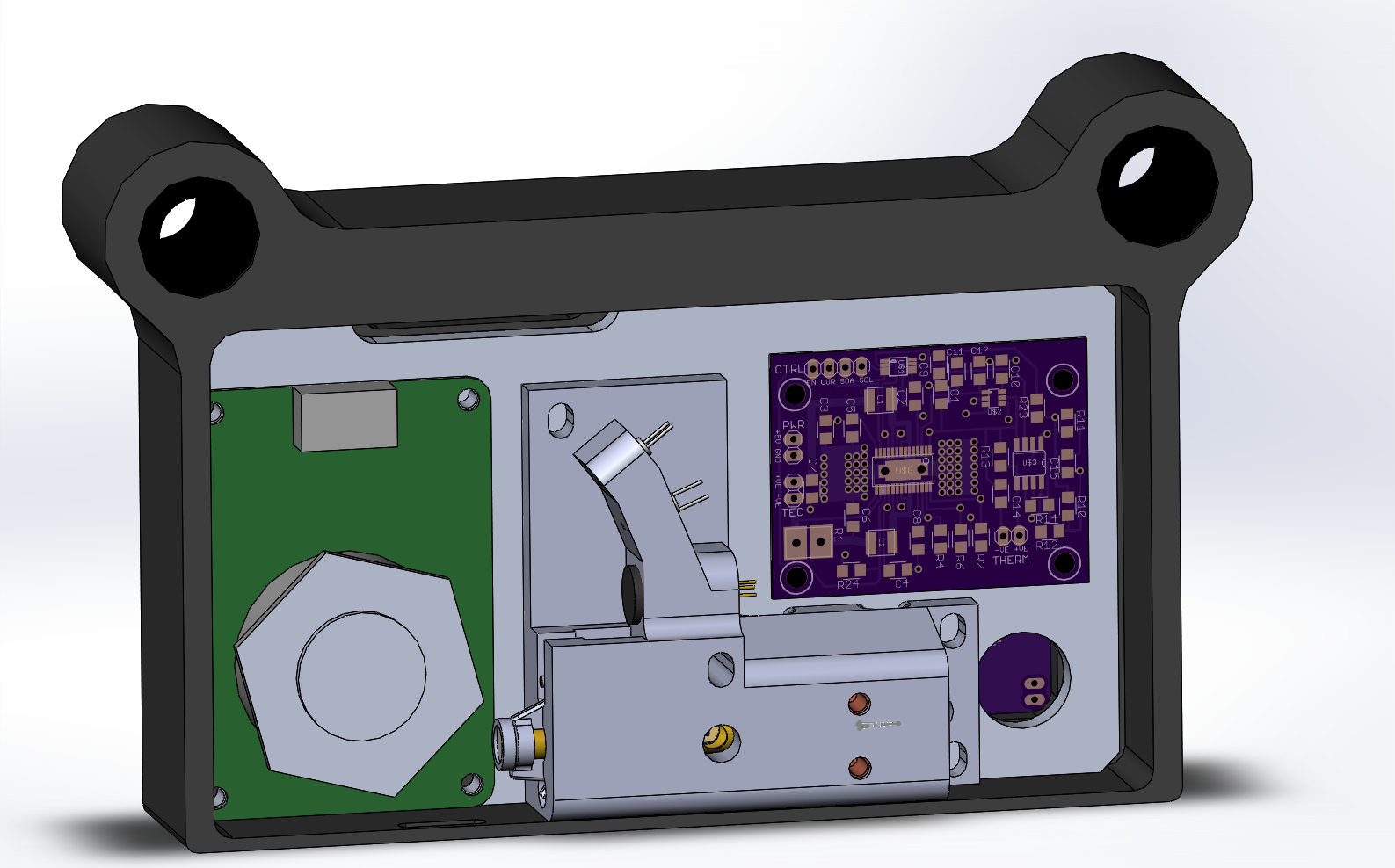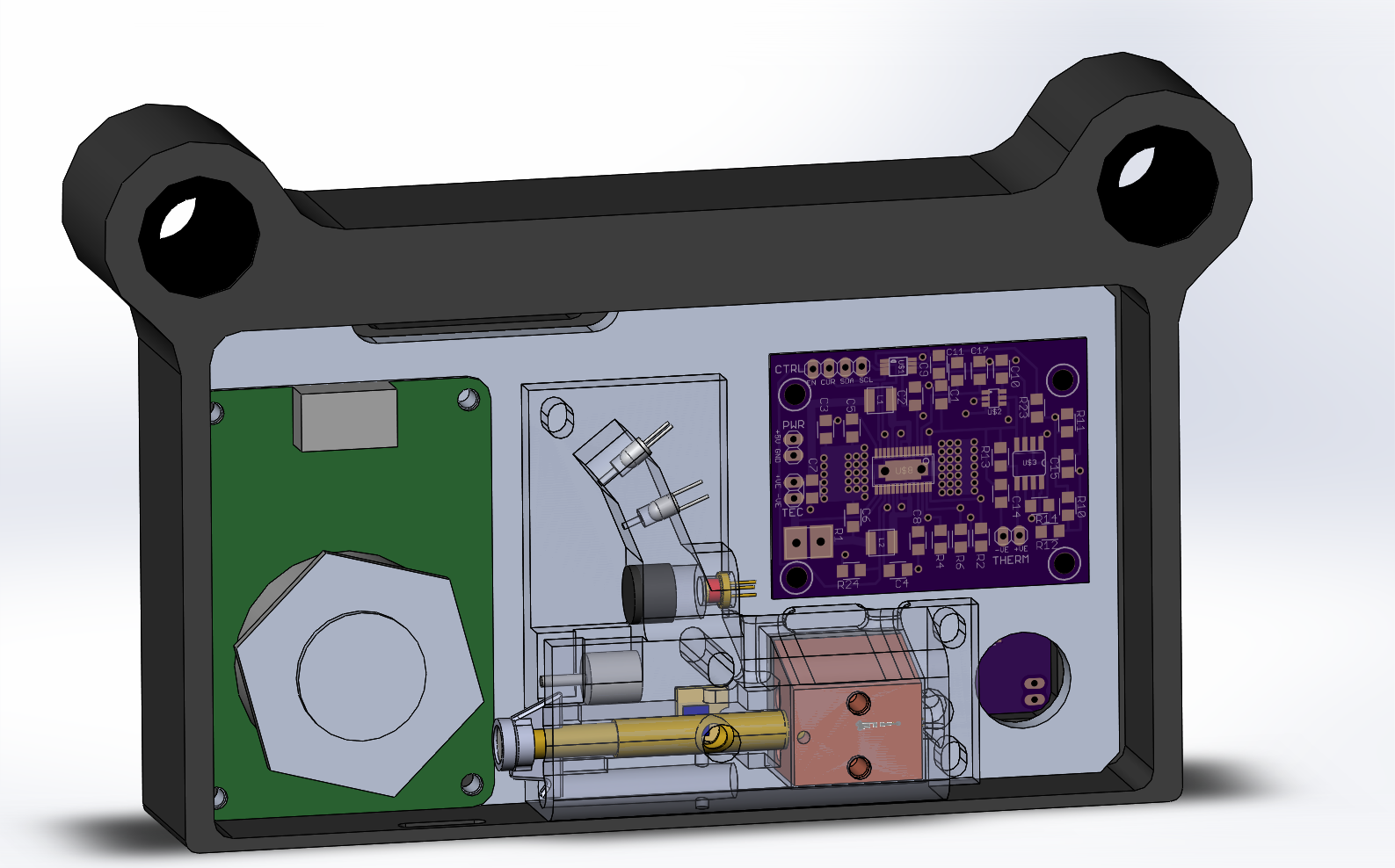The TEC controller boards arrived from OSH and I've sent the order for the upper and lower boards for the print head, so I should have those in a few weeks.
This board is essentially the same circuit as that in the MAX1968 evaluation kit, and I've made the component numbers the same where applicable. I'm using the MAX5215 DAC (I2C) for setting the required temperature once I know it is working correctly I'll make the boards available on OSH.
Most of the components are on their way from mouser, but one of the op-amps is on back order, and I'm waiting for the TECs to come from China, so it will be a while before I know if the board is correct.

I was hoping to source a TEC locally, but the ones I'm after have a large surcharge for small orders, so have ordered a couple of 3V TECs from china/ebay. This has necessitated a re-design of the laser head to accommodate the slightly larger (20mm rather than 14mm) units.
The laser block/head will be 3D printed and integrates the UV laser, heat-sink block, TEC, collimating lens, focus system, laser power sensor and trigger system into one part that can then be positioned in relation to the polygon mirror.
Fig - print head, laser head, mirror unit & TEC board
Having the trigger and UV lasers moulded in one part ensures that the design angles are maintained. The focus system consists of telescoping brass tubes moved by a spring and micro stepper motor.
In other news my L298N boards are stuck in postal limbo, so I've still not had the stepper motors turning, but as I've already tested the outputs, that's not an issue.
I'll do a separate update for the programming part of the serial link between the Pi and the Arduino.
To Do;
- get polygon mirror running under Arduino control
- design focus limit switch arrangement
- get basic link between Pi and Arduino working
- assemble TEC board
- continue setting up basic Arduino commands to be called from the Pi, to allow the greatest flexibility in control, testing and set-up for the print head. When printing the Arduino will be in a static condition and not required to perform any functions. It is solely for setup / calibration and intermittent monitoring during head move.
- continue hardware design of kinematic systems
 David Brown
David Brown

Discussions
Become a Hackaday.io Member
Create an account to leave a comment. Already have an account? Log In.